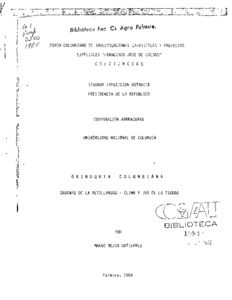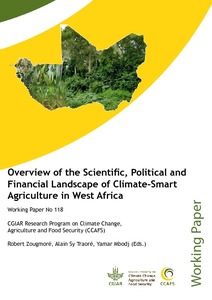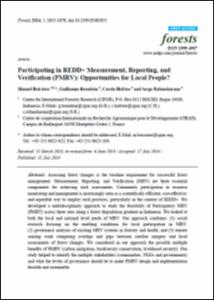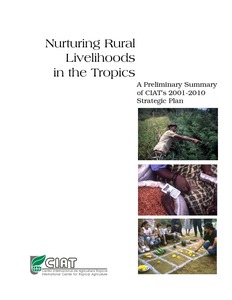agriculture
AGROVOC URI:
Overview of the Scientific, Political and Financial Landscape of Climate-Smart Agriculture in West Africa
The agricultural sector plays a key role in the Economic Community of West African States (ECOWAS). As the backbone of the economy, it affects society at many levels since national economies and people’s jobs, incomes and food security depend upon it. Climate change and variability pose a major threat to farmers in the region, which is already experiencing rising temperatures, shifting precipitation patterns, and increasing extreme events.
Overview of the scientific, political and financial landscapes of Climate-Smart Agriculture in West Africa: sector of water resources
Participatory Action Research on Climate Risk Management, Bangladesh
The rural populations of southern Bangladesh are some of the most vulnerable communities in the world to the future impacts of climate change. They are particularly at risk from floods, waterlogged soils, and increasing salinity of both land and water. The objective of this project was to analyze the vulnerability of people in four villages that are experiencing different levels of soil salinity.
Participación de las mujeres y los menores en la agricultura de América Latina y el Caribe
Participating in REDD+ Measurement, Reporting, and Verification (PMRV): Opportunities for Local People?
Assessing forest changes is the baseline requirement for successful forest management. Measurement, Reporting, and Verification (MRV) are three essential components for achieving such assessments. Community participation in resource monitoring and management is increasingly seen as a scientifically efficient, cost-effective, and equitable way to employ such practices, particularly in the context of REDD+. We developed a multidisciplinary approach to study the feasibility of Participatory MRV (PMRV) across three sites along a forest degradation gradient in Indonesia.
Niger
Niger is a landlocked country in West Africa located between 11°37´ and 23°23´ north latitude and between 00°10´ and 16°00´ east longitude, with an area of 1,267,000 square kilometers. Niger shares borders with Algeria and Libya in the north, Chad in the east, Nigeria and Benin in the south, and Burkina Faso and Mali in the west. Three-fourths of Niger is cov¬ered by the Sahara Desert. The southern part of the country is in the Sahelian climate zone, with Sudan savannah vegetation.
Nitrogen management in grasslands and forage-based production systems – Role of biological nitrification inhibition (BNI)
Nitrogen (N), being the most critical and essential nutrient for plant growth, largely determines the productivity in both extensive- and intensive- grassland systems. Nitrification and denitrification processes in the soil are the primary drivers generating reactive-N: NO3-, N2O, and NO, and is largely responsible for N-loss and degradation of grasslands. Suppressing nitrification can thus facilitate the retention of soil-N to sustain long-term productivity of grasslands and forage-based production systems.
Nurturing rural livelihoods in the tropics : A preliminary summary of CIAT`s 2001-2010 strategic plan
Nutritious subsistence food systems
The major subsistence food systems of the world that feed resource?poor populations are identified and their capacity to supply essential nutrients in reasonable balance to the people dependent on them has been considered for some of these with a view to overcoming their nutrient limitations in sound agronomic and sustainable ways.
Mud, muddle and models in the knowledge value chain to action on tropical peatland issues
Tropical peatlands are known not only for their high, area-based, carbon emissions in response to land-use change but also as hot spots of debate about associated data uncertainties. Perspectives are still evolving on factors underlying the variability and uncertainty. Debate includes the ways of reducing emissions through rewetting, reforestation and agroforestry.







